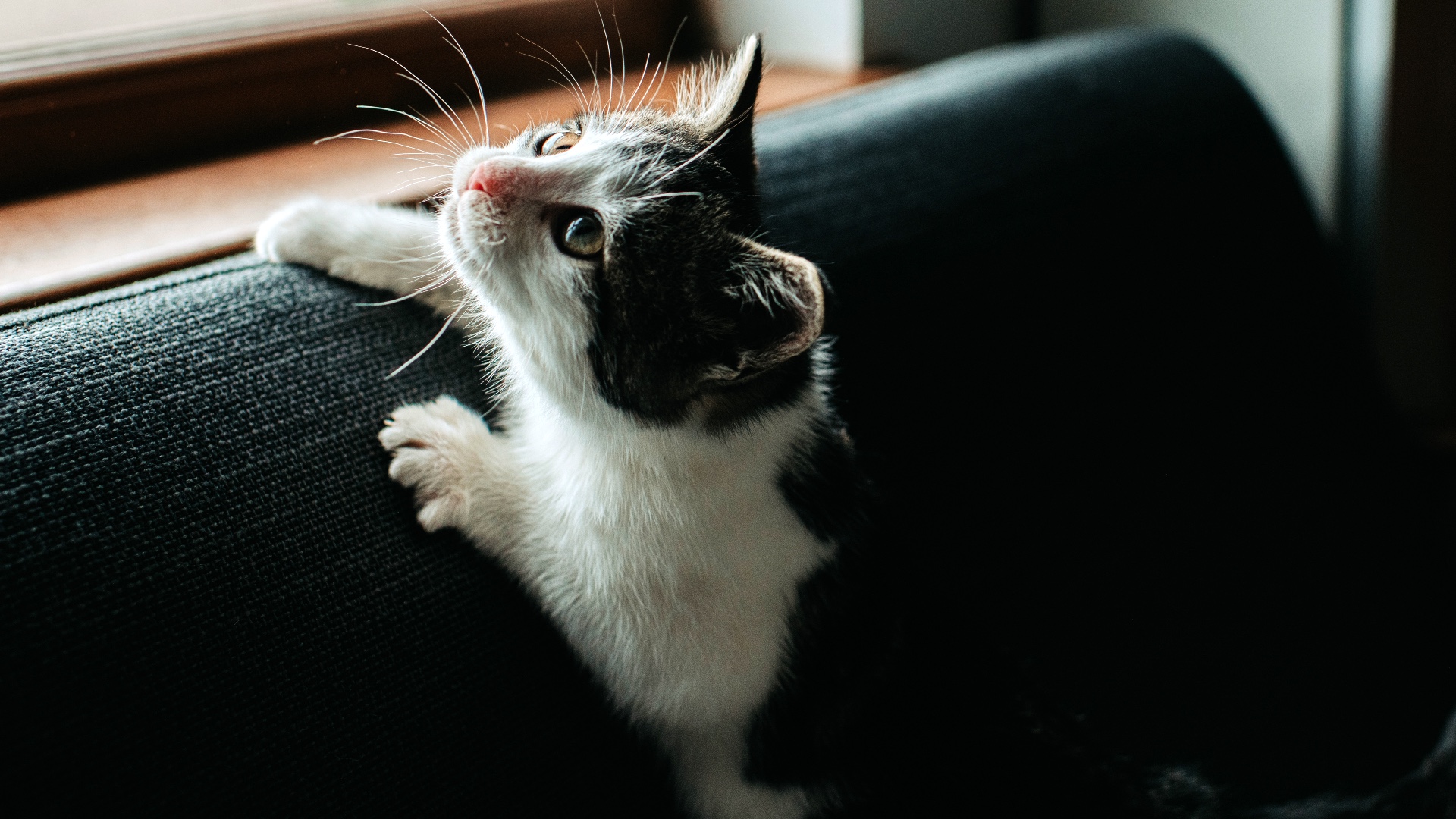Want to stop your cat scratching your furniture? Try this behaviorist’s simple method for success
Feline expert shares five tips to prevent destructive scratching in cats and they’re very straightforward

Cats causing damage to furniture and other household objects through repeated scratching is a common complaint amongst pet parents. And while we understand how frustrating it can be, it's worth remembering that scratching is a very normal feline behavior.
Vital for both their physical and mental wellbeing, scratching helps to keep a cats nails in tip-top condition and it also releases pheromones which act as a message to other cats. However, the last thing you want is your kitty tearing your couch to shreds, so if you're trying to figure out how to keep a cat from scratching furniture, you're in the right place.
Expert feline behaviorist Tabitha Kucera has shared a great post to Instagram where she reveals some of her favorite tips for preventing destructive scratching behavior. You can check out the post below or keep reading for a summary of everything she has to say.
A post shared by Tabitha RVT, Cat & Dog Trainer (@chirrupsandchatter)
A photo posted by on
1. Provide suitable scratching surfaces: "Cats need to scratch, so we want to provide them with appropriate outlets for this behavior," explains Kucera. "Always have plenty of acceptable scratching areas for your cat with a variety of surfaces and textures. Scratchers come in multiple styles, sizes, and materials."
2. Finding the perfect scratcher: "Work with your cat's current behavior to figure out what scratcher would be best. Study where your cat scratches. Is it horizontal? Vertical? What substrate is it most similar to? Cardboard? Wood? Sisal rope? Experiment with a variety of substrates and types of scratchers to determine which your cat prefers.
Scratchers should be sturdy and not wobbly or fall over when your cat is scratching them. Cat scratching posts need to be tall so your cat can stand on their hind legs and fully extend their body up the side of the post." For inspiration, check out our guide to the best cat scratching posts to help you find the right fit for your feline.
3. Location matters: "Our cats like to be with us, so place scratchers in areas where you spend time as well as where your cats spend their time," Kucera advises. "Cats often stretch or scratch when they wake up, so consider placing one near where your cats sleep. Cats also scratch when in a tense situation or as a way to displace anxiety. Locate and place scratchers in all areas where you think your cats would appreciate it most."
Get the best advice, tips and top tech for your beloved Pets
4. Make appropriate scratching areas appealing: "Do not hold your cat near the scratching post and force them to drag their claws on it. We don't enjoy being forced to do things and neither do cats. This can scare your cat and cause them to avoid the scratcher completely. Instead, make the scratching areas you want your cat to scratch more appealing. You can do this by placing catnip of silvervine near them or attaching toys to the scratching place. You can give your cat treats and play with them on or around it too to help create a positive association with the scratcher."
5. Reinforce scratching appropriate scratchers: "If your cat is scratching furniture, identify your cat's preferred scratching scenario by studying where your cat inappropriately scratches. Place an acceptable scratching post based on your cat's preferences near an inappropriate object (for example, couch).
When your cat is consistently using the scratching post it can be moved very gradually (no more than a few inches each day) to a location more suitable to you. It's best, however, to keep the appropriate scratching objects as close to your cat's preferred scratching locations as possible."
Looking for more content similar to this piece? Check out our guide to why does my cat scratch the wall where our vet walks you through how to prevent this frustrating behavior.

Kathryn is a freelance writer who has been a member of the PetsRadar family since it launched in 2020. Highly experienced in her field, she's driven by a desire to provide pet parents with accurate, timely, and informative content that enables them to provide their fur friends with everything they need to thrive.
Kathryn works closely with vets and trainers to ensure all articles offer the most up-to-date information across a range of pet-related fields, from insights into health and behavior issues to tips on products and training.
When she’s not busy crafting the perfect sentence for her features, buying guides and news pieces, she can be found hanging out with her family (which includes one super sassy cat and a kitten), drinking copious amounts of Jasmine tea and reading all the books.
She has written for a range of publications, including Fit&Well, Top Ten Reviews, LiveScience, Goodto, and Product Hunt.
